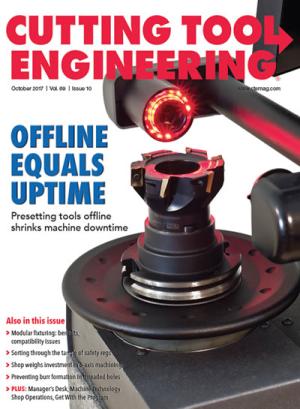Over the past couple of years, I’ve been heavily involved in lean manufacturing. Every other day at the company where I work, we conduct gemba walks where the work happens, plus we have monthly kaizen (rapid improvement) and 5S (workplace organization) events.
A lean item I’d like to explain is the “eight wastes of lean.” Look around your facility and I’ll bet that you can identify a few areas where waste occurs.
The acronym for the eight wastes is DOWNTIME: Defects, Overproduction, Waiting, Nonutilized talent, Transportation, Inventory, Motion and Extra processing.
Let’s look at them individually.
The most obvious example of defects waste is your scrap pile. But parts you must rework to make good parts are also defects. In addition, incorrectly given or taken information is a defect because someone has to verify and correct that information. The costs include wasted production time, wasted materials and wasted inspection.
Overproduction is more common in OEM facilities, where too many parts are made before they are ready to be sold. A machine shop, however, may run a bar of turned shafts and hope its customer will accept the lot. In either case, costs include wasted production time and materials.
How many times have you waited at a machine to perform a secondary operation because the prior operation was not completed? Or maybe you’ve waited for someone to bring raw stock so you can start production. These are scenarios where waiting wastes time.
Nonutilized talent involves preventing employees from using all their skills and knowledge. Imagine a qualified machinist working in the assembly department. He is overqualified for the job. If personnel think they are languishing, they might look for a position at another company.
Transportation waste has nothing to do with trucks. This waste involves unnecessary movement of a part or material. Examples include moving a part from one end of the plant to the other, such as from a machining center to the QC department, and transporting a part from a machine to a secondary operation in a faraway part of the plant.
Inventory waste includes products and materials that sit idle and consume costly floor space. The costs to produce excess parts include machining and inspection time, movement to storage and the storage itself.
Motion can also be wasteful. Imagine an assembler who takes three or four steps to get a part, places the part in front of him or her, reaches high to get some screws, reaches down to get a wrench and then walks to a cart to place the assembled part. Poor ergonomics and workspace design can lead to wasted motion.
Extra processing is more commonly known as “over-processing.” For example, a machinist is machining a part that calls for a finish of 125µm Ra. The machinist, however, takes pride in his work and imparts a 32µm Ra finish. But the customer is paying for only a 125µm Ra finish. The operator may have been able to machine two parts in the time it took to make the one.
I have seen all eight of the DOWNTIME wastes of many times. By reducing any or all of them—even a little—a manufacturing facility will be a much more productive and cost-effective organization.
Related Glossary Terms
- lean manufacturing
lean manufacturing
Companywide culture of continuous improvement, waste reduction and minimal inventory as practiced by individuals in every aspect of the business.
- machining center
machining center
CNC machine tool capable of drilling, reaming, tapping, milling and boring. Normally comes with an automatic toolchanger. See automatic toolchanger.


